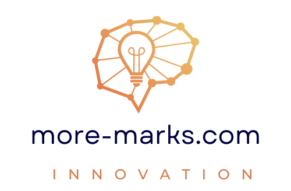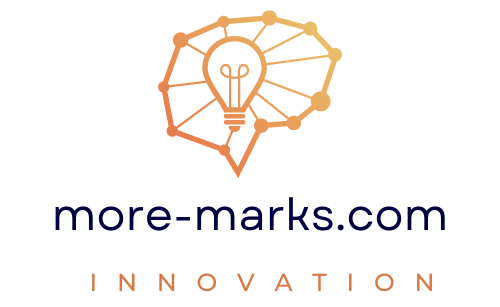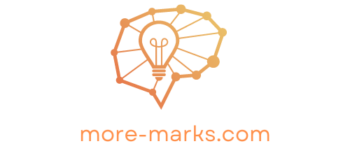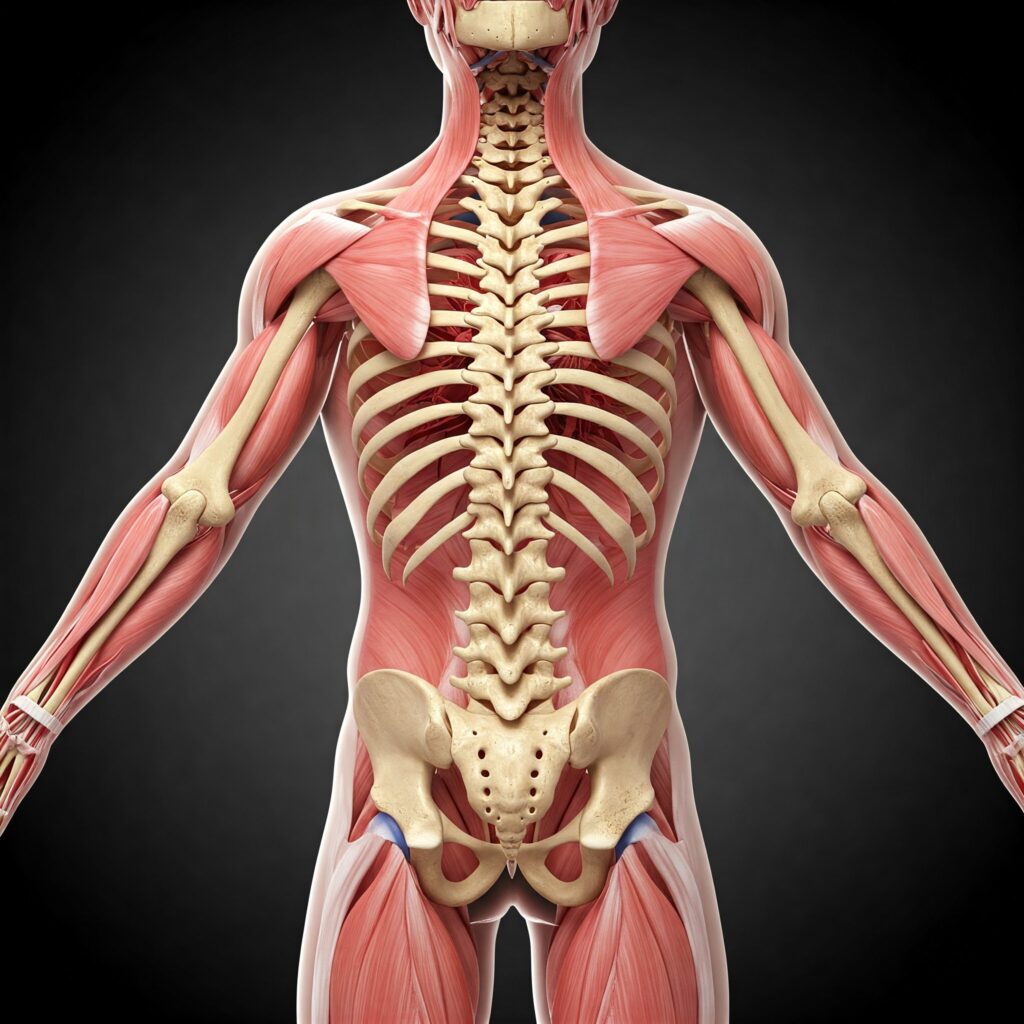Grade V: Bones and Muscles – MCQs
1. Why do adults not grow taller?
- A) Because they do not eat enough.
- B) Because their growth plates have fused.
- C) Because their muscles have stopped growing.
- D) Because they exercise too much.
2. What are X-ray images used for?
- A) Measuring body temperature.
- B) Viewing the inside of the body to diagnose medical problems.
- C) Measuring heart rate.
- D) Viewing muscle strength.
3. What is an organ system?
- A) A group of cells that perform a specific function.
- B) A group of organs that work together to perform a specific function.
- C) A type of muscle tissue.
- D) A part of the circulatory system.
4. What are the functions of the human skeletal system?
- A) Digestion and circulation.
- B) Protecting internal organs and providing structure to the body.
- C) Producing hormones.
- D) Absorbing nutrients.
5. How many bones are in the adult human skeleton?
- A) 100
- B) 206
- C) 300
- D) 150
6. How many bones are in a newborn baby?
- A) 206
- B) 300+
- C) 150
- D) 100
7. What are the main components of the human skeleton?
- A) Heart, lungs, liver, and kidneys.
- B) Skull, backbone, rib cage, limbs, and girdles.
- C) Skin, muscles, brain, and stomach.
- D) Eyes, ears, nose, and mouth.
8. What is orthopaedics?
- A) The study of the digestive system.
- B) The branch of medicine that treats disorders of the musculo-skeletal system.
- C) The study of brain disorders.
- D) The study of skin diseases.
9. How does the skeletal system assist in hearing?
- A) Through three ear bones called ossicles.
- B) By amplifying sound waves through the skull.
- C) By vibrating the muscles in the ear.
- D) By sending electrical signals directly to the brain.
10. What is the outer layer of bone called?
- A) Spongy bone
- B) Compact bone
- C) Bone marrow
- D) Cartilage
11. How many bones make up the skull?
- A) 22
- B) 33
- C) 206
- D) 8
12. How many cranial bones are there?
- A) 22
- B) 33
- C) 8
- D) 206
13. What is unique about the lower jaw?
- A) It is fixed.
- B) It is movable.
- C) It has no teeth.
- D) It is made of cartilage.
14. How many bones does the backbone consist of?
- A) 22
- B) 33
- C) 8
- D) 206
15. What is the function of the backbone?
- A) Protects the brain.
- B) Protects the spinal cord.
- C) Digests food.
- D) Pumps blood.
16. What are the first and last bones of the backbone called?
- A) Axis and vertebra
- B) Skull and tail bone
- C) Atlas and tail bone
- D) Femur and humerus
17. What are floating ribs?
- A) Ribs attached to the sternum.
- B) Ribs attached only to the backbone.
- C) Ribs attached to the pelvis.
- D) Ribs floating in the body.
18. How many pairs of limbs do humans have?
- A) One
- B) Two
- C) Three
- D) Four
19. What is the longest bone in the forelimbs?
- A) Femur
- B) Humerus
- C) Tibia
- D) Ulna
20. How is the wrist composed?
- A) Eight small bones in two rows.
- B) One large bone.
- C) Six small bones in three rows.
- D) Four large bones in two rows.
21. What is the longest, strongest, and largest bone in the body?
- A) Humerus
- B) Tibia
- C) Femur
- D) Ulna
22. What dietary recommendations are given for strong bones and muscles?
- A) Eat junk food.
- B) Avoid exercise.
- C) Eat right, exercise daily, and lead an active life.
- D) Drink only water.
23. What is the ‘funny bone’?
- A) A bone in the elbow.
- B) A nerve in the elbow.
- C) A bone in the knee.
- D) A nerve in the knee.
24. What are the two pairs of girdles in the human body?
- A) Pectoral and pelvic girdles.
- B) Skull and backbone.
- C) Rib cage and spine.
- D) Arms and legs.
25. What is the function of the pectoral girdle?
- A) Digests food.
- B) Connects the forelimbs to the skeleton.
- C) Pumps blood.
- D) Protects the brain.
26. Which bones are part of the pectoral girdle?
- A) Skull and ribs.
- B) Scapula and clavicle.
- C) Femur and tibia.
- D) Humerus and ulna.
27. What functions does the pelvic girdle serve?
- A) Supports the weight of the body.
- B) Allows the hind limbs to attach to it.
- C) Protects organs such as the urinary bladder and reproductive organs.
- D) All of the above.
28. Why does the skeleton have many bones of different shapes and sizes?
- A) To prevent movement.
- B) To allow for a range of movements.
- C) To make the body heavier.
- D) To reduce flexibility.
29. What is a joint?
- A) A structure where two or more bones are connected.
- B) A type of muscle tissue.
- C) A bone in the skull.
- D) A part of the digestive system.
30. What are immovable joints?
- A) Joints that allow movement.
- B) Joints that do not allow any movement.
- C) Joints that are found in the knee.
- D) Joints that are found in the elbow.
31. What are movable joints and their classification?
- A) Joints that allow movement, classified based on the type of movement they allow.
- B) Joints that do not allow movement.
- C) Joints that are found in the skull.
- D) Joints that are part of the digestive system.
32. What is a ball-and-socket joint?
- A) A type of joint that allows movement in one direction.
- B) A type of joint that allows movement in all directions, including rotational movement.
- C) A type of joint that is immovable.
- D) A type of joint found in the skull.
33. What is a hinge joint?
- A) A joint that allows movement in all directions.
- B) A joint that allows back-and-forth movement.
- C) A joint that is immovable.
- D) A joint found in the skull.
34. What is a pivot joint?
- A) A joint that allows movement in all directions.
- B) A joint that allows back-and-forth movement.
- C) A joint that allows rotational movement.
- D) A joint found in the skull.
35. What is a gliding joint?
- A) A joint that allows movement in all directions.
- B) A joint that allows back-and-forth and side-to-side movement.
- C) A joint that is immovable.
- D) A joint found in the skull.
36. What is a ligament?
- A) A stretchy tissue that attaches muscles to bones.
- B) A tough but flexible tissue found between the bones in joints.
- C) A strong and slightly elastic tissue that binds one bone to another bone.
- D) A bone in the skull.
37. What is a tendon?
- A) A stretchy tissue that attaches muscles to bones.
- B) A tough but flexible tissue found between the bones in joints.
- C) A strong and slightly elastic tissue that binds one bone to another bone.
- D) A bone in the skull.
38. What is cartilage?
- A) A stretchy tissue that attaches muscles to bones.
- B) A tough but flexible tissue that is softer than bone.
- C) A strong and slightly elastic tissue that binds one bone to another bone.
- D) A bone in the skull.
39. How can a balanced diet help in building stronger bones?
- A) By providing essential nutrients such as calcium and vitamin D.
- B) By increasing the amount of fat in the body.
- C) By reducing the need for exercise.
- D) By increasing the amount of sugar in the diet.
40. What bone conditions can result from poor bone health?
- A) Arthritis and scoliosis.
- B) Rickets and osteoporosis.
- C) Bursitis and tendinitis.
- D) Fractures and sprains.
41. What is osteoporosis?
- A) A condition where bones become weak and brittle.
- B) A condition where bones become stronger.
- C) A condition where muscles become weak.
- D) A condition where joints become immovable.
42. Which type of joint is found in the wrist and ankle?
- A) Ball-and-socket joint
- B) Hinge joint
- C) Pivot joint
- D) Gliding joint
43. What is the longest bone in the forelimbs?
- A) Femur
- B) Humerus
- C) Tibia
- D) Ulna
44. Where do two or more bones get connected?
- A) At a muscle
- B) At a joint
- C) At a tendon
- D) At a ligament
45. How many bones form the brain box?
- A) Six
- B) Eight
- C) Ten
- D) Twelve
46. How many bones are present in an adult human skeleton?
- A) 100
- B) 150
- C) 206
- D) 300
47. How many muscles are there in the human body?
- A) 206
- B) 320
- C) 640
- D) 1000
48. How are muscles connected to bones?
- A) By ligaments
- B) By cartilage
- C) By tendons
- D) By joints
49. What types of movements can muscles facilitate?
- A) Only fast movements like running
- B) Only slow movements like stretching
- C) Both fast movements like running and slow movements like stretching
- D) No movement
50. What does it mean for muscle cells to be contractible?
- A) They can stretch.
- B) They can shorten when they contract.
- C) They can become rigid.
- D) They can multiply.
51. Can muscles push bones?
- A) Yes, muscles can push bones.
- B) No, muscles can only pull bones.
- C) Yes, muscles can push and pull bones.
- D) No, muscles do not affect bones.
52. What are involuntary muscles and where are they found?
- A) Muscles that are under our control, found in the limbs.
- B) Muscles that are not under our control, found in the internal walls of blood vessels and organs.
- C) Muscles that are not under our control, found only in the heart.
- D) Muscles that are under our control, found in the stomach.
53. What is another name for involuntary muscles?
- A) Smooth muscles
- B) Cardiac muscles
- C) Skeletal muscles
- D) Voluntary muscles
54. What are cardiac muscles and where are they found?
- A) Muscles found in the arms
- B) Muscles found in the legs
- C) Muscles found in the heart
- D) Muscles found in the brain
55. How do cardiac muscles function and are they under our control?
- A) They contract to pump blood and are under our control.
- B) They contract to pump blood and are not under our control.
- C) They do not contract and are not under our control.
- D) They do not contract and are under our control.
56. What is the Jaipur Leg and who invented it?
- A) A prosthetic leg made of rubber and wood, invented by Dr. P.K. Sethi and Ram Chandar Sharma.
- B) A new type of shoe invented for marathon runners.
- C) A leg brace used for treating fractures.
- D) A robotic leg designed for space travel.
57. Who uses the Jaipur Leg?
- A) People who have had below-the-knee amputations.
- B) People who have leg fractures.
- C) People who run marathons.
- D) People who need leg support.
58. What recognition did Dr. P.K. Sethi receive for his invention?
- A) Nobel Prize
- B) Ramon Magsaysay Award
- C) Pulitzer Prize
- D) Olympic Medal
59. What is the vertebral column?
- A) The backbone formed by a chain of vertebrae.
- B) The rib cage formed by a chain of ribs.
- C) The skull formed by a chain of bones.
- D) The pelvis formed by a chain of bones.
60. What is the spinal cord?
- A) A chain of vertebrae.
- B) A thick cord of nerves that passes through the backbone.
- C) A bone in the back.
- D) A muscle in the back.
61. What are floating ribs?
- A) Ribs attached to the sternum.
- B) Ribs attached only to the backbone and free in the front.
- C) Ribs attached to the pelvis.
- D) Ribs floating in the body.
62. What is the pectoral girdle?
- A) The pair of bones that form the shoulder.
- B) The pair of bones that form the hip.
- C) The pair of bones that form the knee.
- D) The pair of bones that form the ankle.
63. What is the pelvic girdle?
- A) The pair of bones that form the shoulder.
- B) The pair of bones that form the hip.
- C) The pair of bones that form the knee.
- D) The pair of bones that form the ankle.
64. What is a joint?
- A) A structure where two or more bones get connected.
- B) A muscle in the body.
- C) A nerve in the body.
- D) A part of the digestive system.
65. What is a ligament?
- A) A strong tissue that binds bones to bones.
- B) A strong tissue that binds muscles to bones.
- C) A strong tissue that binds nerves to bones.
- D) A strong tissue that binds skin to bones.
66. What is a tendon?
- A) A strong tissue that binds bones to bones.
- B) A strong tissue that binds muscles to bones.
- C) A strong tissue that binds nerves to bones.
- D) A strong tissue that binds skin to bones.
67. What is cartilage?
- A) A strong and flexible tissue present between the joints.
- B) A strong tissue that binds muscles to bones.
- C) A strong tissue that binds nerves to bones.
- D) A strong tissue that binds skin to bones.
68. What are voluntary muscles?
- A) Muscles that are under our control.
- B) Muscles that are not under our control.
- C) Muscles found in the heart.
- D) Muscles found in the stomach.
69. What are involuntary muscles?
- A) Muscles that are under our control.
- B) Muscles that are not under our control.
- C) Muscles found in the limbs.
- D) Muscles found in the skeleton.
70. What are cardiac muscles?
- A) Muscles found in the arms.
- B) Muscles found in the legs.
- C) Muscles found in the heart.
- D) Muscles found in the stomach.
71. What are the primary functions of the skeleton?
- A) Protect internal organs and give structure to the body.
- B) Produce hormones.
- C) Absorb nutrients.
- D) Digest food.
72. What components make up the human skeleton?
- A) Heart, lungs, liver, and kidneys.
- B) Skull, backbone, rib cage, limbs, and girdles.
- C) Skin, muscles, brain, and stomach.
- D) Eyes, ears, nose, and mouth.
73. How do joints contribute to body movement?
- A) By preventing movement.
- B) By allowing the body to move in many ways.
- C) By reducing flexibility.
- D) By making the body heavier.
74. What are the different kinds of movable joints?
- A) Ball-and-socket joints, hinge joints, pivot joints, and gliding joints.
- B) Fixed joints, hinge joints, pivot joints, and gliding joints.
- C) Ball-and-socket joints, hinge joints, fixed joints, and gliding joints.
- D) Ball-and-socket joints, hinge joints, pivot joints, and fixed joints.
75. What role do muscles play in the skeletal system?
- A) Bring movement to the skeleton by contracting and relaxing.
- B) Produce hormones.
- C) Absorb nutrients.
- D) Digest food.
76. What are the three types of muscles?
- A) Voluntary muscles, involuntary muscles, and cardiac muscles.
- B) Smooth muscles, skeletal muscles, and cardiac muscles.
- C) Voluntary muscles, smooth muscles, and cardiac muscles.
- D) Smooth muscles, skeletal muscles, and voluntary muscles.
77. What protects the spinal cord and carries the weight of the body?
- A) Skull
- B) Femur
- C) Hip girdle
- D) Backbone
78. The first seven pairs of ribs are called?
- A) True ribs
- B) Sternum
- C) False ribs
- D) Floating ribs
79. The longest bone in the forelimbs is?
- A) Femur
- B) Humerus
- C) Sternum
- D) Vertebra
80. A joint that allows your head to turn sideways is called?
- A) Hinge joint
- B) Ball-and-socket joint
- C) Pivot joint
- D) Gliding joint
81. The bones of the skull that form the framework of the face are called?
- A) Cranial bones
- B) Facial bones
- C) Atlas
- D) Vertebrae
82. Muscles are connected to bones by ligaments. (True/False)
- A) True
- B) False
83. Skeletal muscles are involuntary muscles. (True/False)
- A) True
- B) False
84. Floating ribs do not attach to the breast bone. (True/False)
- A) True
- B) False
85. The bone marrow is the site of blood cell production. (True/False)
- A) True
- B) False
86. The pectoral girdle protects the developing baby in a pregnant woman. (True/False)
- A) True
- B) False
87. Wrists and ankles have pivot joints. (True/False)
- A) True
- B) False
88. Name two organs protected by the rib cage.
- A) Heart and liver
- B) Heart and lungs
- C) Lungs and stomach
- D) Brain and heart
89. Name the parts of our skeletal system.
- A) Heart, lungs, liver, and kidneys.
- B) Skull, backbone, rib cage, limbs, and girdles.
- C) Skin, muscles, brain, and stomach.
- D) Eyes, ears, nose, and mouth.
90. What is cartilage?
- A) A stretchy tissue that attaches muscles to bones.
- B) A tough but flexible tissue that is softer than bone.
- C) A strong and slightly elastic tissue that binds one bone to another bone.
- D) A bone in the skull.
91. Name the longest bone of our body.
- A) Femur
- B) Humerus
- C) Tibia
- D) Ulna
92. Which part of our skull has a movable joint?
- A) Upper jaw
- B) Lower jaw
- C) Cheekbone
- D) Nose
93. Write the difference between ligament and tendon.
- A) Ligament binds muscles to bones; tendon binds bones to bones.
- B) Ligament binds bones to bones; tendon binds muscles to bones.
- C) Ligament binds muscles to muscles; tendon binds bones to bones.
- D) Ligament binds nerves to bones; tendon binds muscles to bones.
94. Define voluntary and involuntary muscles with examples.
- A) Voluntary muscles are under our control (e.g., biceps); involuntary muscles are not under our control (e.g., heart muscles).
- B) Voluntary muscles are not under our control (e.g., biceps); involuntary muscles are under our control (e.g., heart muscles).
- C) Voluntary muscles are smooth (e.g., intestines); involuntary muscles are skeletal (e.g., arms).
- D) Voluntary muscles are skeletal (e.g., heart); involuntary muscles are smooth (e.g., arms).
95. What is a joint? Name four movable joints with examples.
- A) A joint is where two or more muscles connect; examples: elbow, knee, wrist, ankle.
- B) A joint is where two or more bones connect; examples: shoulder (ball-and-socket), knee (hinge), neck (pivot), wrist (gliding).
- C) A joint is where two or more nerves connect; examples: shoulder, knee, neck, wrist.
- D) A joint is where two or more organs connect; examples: shoulder, knee, neck, wrist.
96. Write the functions of the skeletal system.
- A) Digest food and absorb nutrients.
- B) Protect internal organs, provide structure, allow movement, produce blood cells, store minerals.
- C) Pump blood and transport oxygen.
- D) Produce hormones and regulate body temperature.
97. Name the parts of the axial skeleton and appendicular skeleton.
- A) Axial: Skull, vertebral column, rib cage; Appendicular: Limbs and girdles.
- B) Axial: Heart, lungs, liver; Appendicular: Limbs and muscles.
- C) Axial: Skin, muscles, brain; Appendicular: Limbs and bones.
- D) Axial: Eyes, ears, nose; Appendicular: Limbs and organs.
98. What are movable joints?
- A) Joints that allow a range of movements between the bones they connect.
- B) Joints that do not allow any movement.
- C) Joints that are found in the skull.
- D) Joints that are part of the digestive system.
99. Describe the functions of movable joints and classify them.
- A) Movable joints allow a range of movements: ball-and-socket, hinge, pivot, gliding.
- B) Movable joints do not allow any movement.
- C) Movable joints are found in the skull.
- D) Movable joints are part of the digestive system.
100. Write the functions of pectoral and pelvic girdles.
- A) Pectoral girdle: Digests food; Pelvic girdle: Pumps blood.
- B) Pectoral girdle: Provides attachment points for muscles of the shoulder and elbow; Pelvic girdle: Supports body weight, attaches hind limbs, protects pelvic organs.
- C) Pectoral girdle: Produces hormones; Pelvic girdle: Absorbs nutrients.
- D) Pectoral girdle: Transports oxygen; Pelvic girdle: Regulates body temperature.
101. Why do muscles work in pairs? Explain with an example.
- A) Muscles work in pairs because they can only push bones; e.g., biceps and triceps.
- B) Muscles work in pairs because they can only pull bones; e.g., biceps and triceps.
- C) Muscles work in pairs because they can both push and pull bones; e.g., biceps and triceps.
- D) Muscles work in pairs because they do not affect bones; e.g., biceps and triceps.
102. Why do muscles grow larger and stronger in weightlifters?
- A) Due to hypertrophy from resistance training, causing small tears in muscle fibers that repair and fuse, increasing mass and strength.
- B) Due to a reduction in muscle fibers from weightlifting.
- C) Due to a decrease in growth hormones.
- D) Due to a decrease in protein synthesis.
103. Can you increase or decrease the pumping action of your heart?
- A) Yes, through regular cardiovascular exercise.
- B) No, the pumping action cannot be influenced.
- C) Yes, by reducing the amount of exercise.
- D) No, by following a sedentary lifestyle.
104. Why are aged people more prone to bone fractures?
- A) Because bones lose density and strength with age (osteoporosis).
- B) Because bones become stronger with age.
- C) Because muscles grow stronger with age.
- D) Because bones do not change with age.
105. Is there a difference in the size of the pelvic girdle between men and women?
- A) Yes, women’s pelvic girdles are broader, shallower, and more circular to accommodate childbirth; men’s are narrower, deeper, and more heart-shaped.
- B) No, there is no difference.
- C) Yes, men’s pelvic girdles are broader and shallower.
- D) No, women’s pelvic girdles are narrower and deeper.
106. A child of your domestic helper is suffering from rickets. Would you help? How?
- A) Yes, by ensuring sunlight exposure and a diet rich in vitamin D and calcium, consulting a healthcare provider for supplements, and providing information about local health services.
- B) No, rickets cannot be treated.
- C) Yes, by reducing the child’s physical activity.
- D) No, by not changing the child’s diet.



